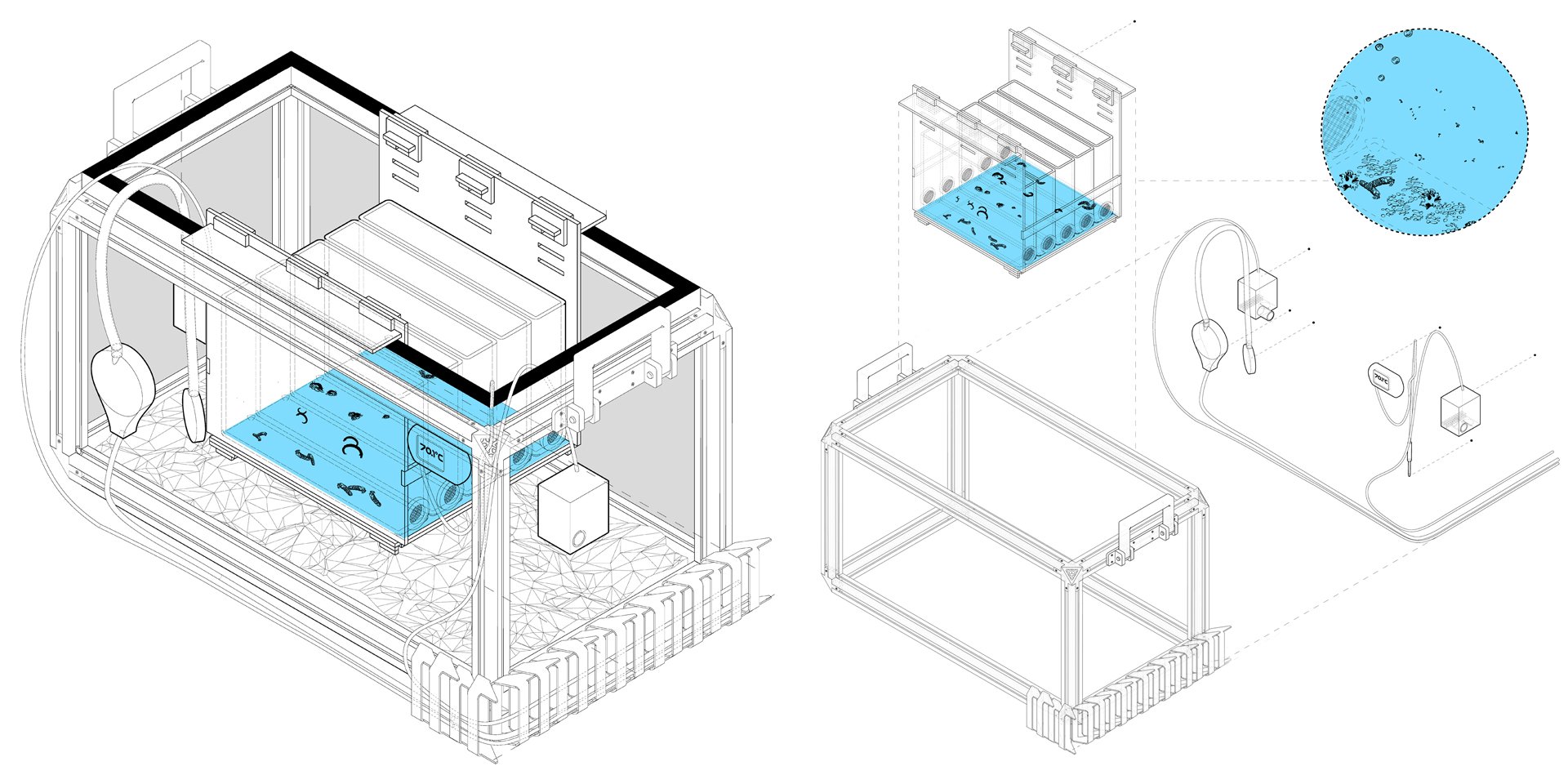Caddisflies
The rising anthropogenic emission of plastic waste is threatening water environment including river and ocean. Microplastic, which are small particles degraded from plastic waste, plays a critical role in exacerbating the living environment for aquatic animals. These microplastic waste are hard to be observed by human and difficult to be recycled or cleaned due to their size and aquatic environment. However, through learning certain animals’ ability of building their own architecture, caddisfly specifically, we would be able to find a potential solution to alleviate microplastic pollution. Caddisflies spend most of their life living in water. They secrete silk as a waterproof adhesive to bond diverse materials together for protection, camouflage, and even prey trap. The intention is to explore the possibility of using caddisflies’ ability to collect and recycle microplastic emission in aquatic environments such as polluted rivers, lakes and even ocean.
Credit: Mitchell Joachim (PI), Shi Zhang, Matt Mitchell, Taili Zhuang, Ana Toledano, Molly Ritmiller, Liana Grobstein, Michael Chambers, Jade Manbodh, Effie Mbrow.






